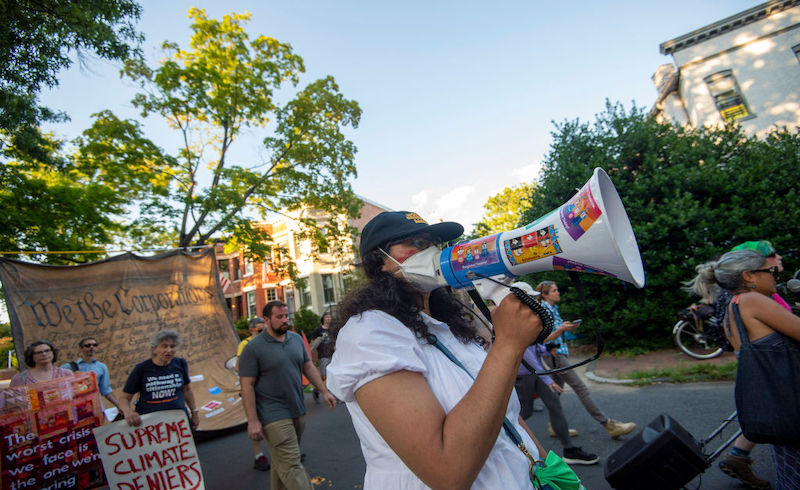
Rejecting EPA’s ability to reshape the coal industry, the Court forecasts invalidating future agency actions.
The U.S. Supreme Court decided West Virginia v. EPA on the last day of the Court’s term. A six-Justice majority held that the Clean Power Plan (CPP)—issued by the Obama-era U.S. Environmental Protection Agency (EPA) in 2015—was unlawful.
I will discuss the justiciability issue, the merits issue, its effects on mitigating climate change, and its broader effects.
The six-Justice majority began by holding that the validity of the CPP was justiciable, meaning the Court had the authority to review the issue. But the Court’s decision to hear the case was unorthodox considering the CPP’s tormented history.
Shortly after EPA issued the CPP, the Supreme Court took the unprecedented step of halting the CPP while it was awaiting review before an appellate court in Washington, D.C., and before any other lower court had addressed it in any way. After the election of President Donald J. Trump, the Trump-era EPA withdrew the CPP and replaced it with the Affordable Clean Energy Rule (ACE). The D.C. appeals court then held that the ACE was invalid.
After the election of President Joseph R. Biden, the Biden EPA noted that the Supreme Court had blocked the CPP. The Biden Administration announced that it had no intention of attempting to implement the CPP. The Biden Administration then argued that the case was moot, because the original point of contention—the CPP—no longer existed.
The majority held that the case was not moot because EPA had not disavowed a future attempt to implement some rule that is similar to the CPP. A similar rule, the Court argues, would cause the same injuries to the complaining states and raise the same issues.
The question on the merits was whether EPA had legal authority to issue the CPP. That turned on the meaning of a phrase in the Clean Air Act: “best system of emissions reduction” (BSER).
EPA can require major pollutant sources to implement a BSER to reduce its emissions. The CPP had three parts. The first and least important part required owners of electric-generating plants to reduce their emissions by making modifications to their coal-fired generators and changing the way they operated those generators. The Justices who wrote the majority opinion had no problem holding that EPA had the power to require owners of generators to take those actions. They were similar to the kinds of requirements that EPA had imposed as BSER in other contexts.
The much more important second and third parts of the CPP required owners of coal-fired generators to reduce significantly use of their high-carbon coal-fired generators. The CPP also required owners to replace significantly the electricity that would have been generated by those coal-powered plants with electricity generated by low-carbon natural gas generating plants and carbon-free sources such as solar and wind.
The majority concluded that EPA did not have the power to require owners of coal-fired generating plants to substitute natural gas generating plants and solar and wind electricity sources for their coal-fired generating plants. The Court arrived at this conclusion by determining that those fuel-switching requirements did not qualify as BSER. The Court noted that EPA had previously characterized BSER methods as reducing emissions by modifying pollution-emitting equipment or changing the method of operation to reduce emissions, such as required in part one of the CPP. The majority thought that the words of the statute—EPA can require a major pollutant source to use the “best system of emission reduction … that has been adequately demonstrated”—did not authorize EPA to require owners of major pollutant sources to substitute some sources of electricity for other, less pollution-emitting sources.
The majority relied in part on the “major questions doctrine” as the basis for its decision. The major questions doctrine is a recently formalized tool by the Supreme Court to scrutinize agency actions that have vast economic and political significance. The majority concluded that the CPP did not have a “clear” basis in the Clean Air Act to restructure the coal-fired generating industry.
The majority did not need to invoke the major questions doctrine to hold that EPA lacked the power to issue the CPP. That doctrine, however, will play a major role in rendering agencies incapable of taking many other actions in response to the constantly changing array of societal problems.
This opinion makes it more difficult for the United States to reduce carbon dioxide emissions and fulfill its international role in mitigating climate change. I do not solely blame the Supreme Court majority for those unfortunate effects, however. Part of the blame should fall squarely on the shoulders of “we the people.”
When President Barack Obama took office, he urged the then Democratic-controlled Congress to enact a law that placed a price on carbon to internalize the social cost of climate change. Economists broadly agree that forcing energy consumers to bear the costs of climate change by placing a price on carbon is the most effective way of mitigating climate change.
Congress rejected President Obama’s initiative. That left the Clean Air Act as one of the only tools that EPA could use to mitigate climate change. That 50-year-old statute does not clearly address climate change and provides scant tools that EPA can use to mitigate climate change.
When President Biden took office, he must have believed that Congress would not enact laws authorizing EPA to address climate change. He proposed only some subsidies for wind and solar that would have had only a marginal effect on climate change. Some members of Congress have blocked even those modest measures.
One source of the problem is easy to identify. Polls show that a majority of people want the United States to take actions to mitigate climate change, but they are not willing to pay for those actions. I believe that we should take the actions required to mitigate climate change because the staggering cost of climate change is far greater than the cost of mitigating climate change. So far, however, the U.S. public has not shown enough willingness to pay the cost of mitigating climate change. This enables Congress to choose not to take any effective action to mitigate climate change.
In the past, it was realistic to expect Congress to respond to unexpected problems by enacting a statute. The extreme political polarity that we are experiencing today renders Congress unwilling to respond effectively to new problems. That leaves agencies armed only with broadly worded statutes that are 30 to 50 years old as their only means of addressing new problems. But the major questions doctrine, as used in West Virginia to prevent EPA’s structural change of coal-fired electricity generation, will make it exceedingly difficult for agencies to address new problems. In turn, the major questions doctrine could leave the nation powerless to take any effective action in response to new problems that will inevitably arise in the future.
This essay is part of a ten-part series entitled The Supreme Court’s 2021-2022 Regulatory Term.




